What Is Dynamic Content?
Dynamic content is content that changes automatically based on user data, preferences, and behavior. It adjusts in real time in response to factors like the user’s profile, location, search terms, or browsing history.
As a marketer, you can include dynamic content in many digital formats, including:
- Websites
- Pop-ups
- Emails
- Ads (display, search, and social media)
Dynamic content is personalized. It makes the experience more relevant to the prospect or customer.
This type of content can enrich every stage of the buyer’s journey:
- At the awareness stage, it can welcome new prospects and guide them to useful resources
- At the consideration stage, it can use previous interactions to guide prospects deeper into their areas of interest
- At the decision stage, it can surface profile-specific data about why a product meets their needs
Dynamic Content Examples
Want to see dynamic content in action? Here are four examples from a series of interactions with one brand.
Below, the Vyper display ad uses two kinds of dynamic elements.
To start, the ad uses dynamic remarketing to target prospects based on their browsing history. It displays the specific items they viewed previously. Encouraging them to look again.
Also, the prices appear dynamically when the user hovers over the ad. It’s using engagement as a trigger to show additional information. This interactive element can help hold a viewer’s attention and encourage a click.
Vyper’s dynamic experience doesn’t end with the ad.
After clicking on the display ad, the prospect lands on Vyper’s product page. The website uses cookies to identify the user as a person who hasn’t subscribed to the company’s email list.
That triggers a dynamic website pop-up. It prompts the user to join the company’s email list and offers a discount as an incentive.
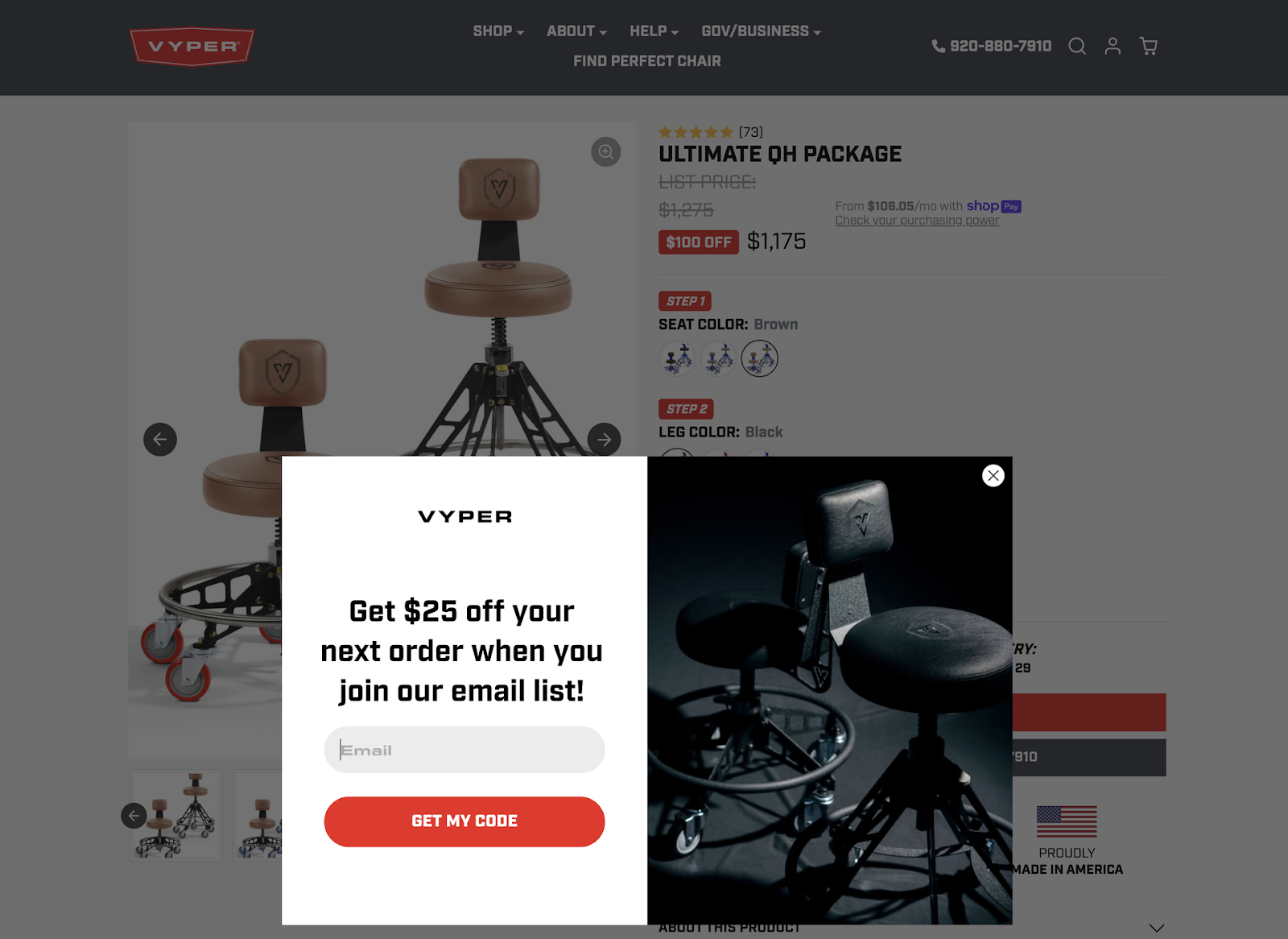
Back on the product listing, the page uses dynamic content to display the advertised item’s delivery ****. It’s based on the product’s real-time availability, the current ****, and the shipping speed.
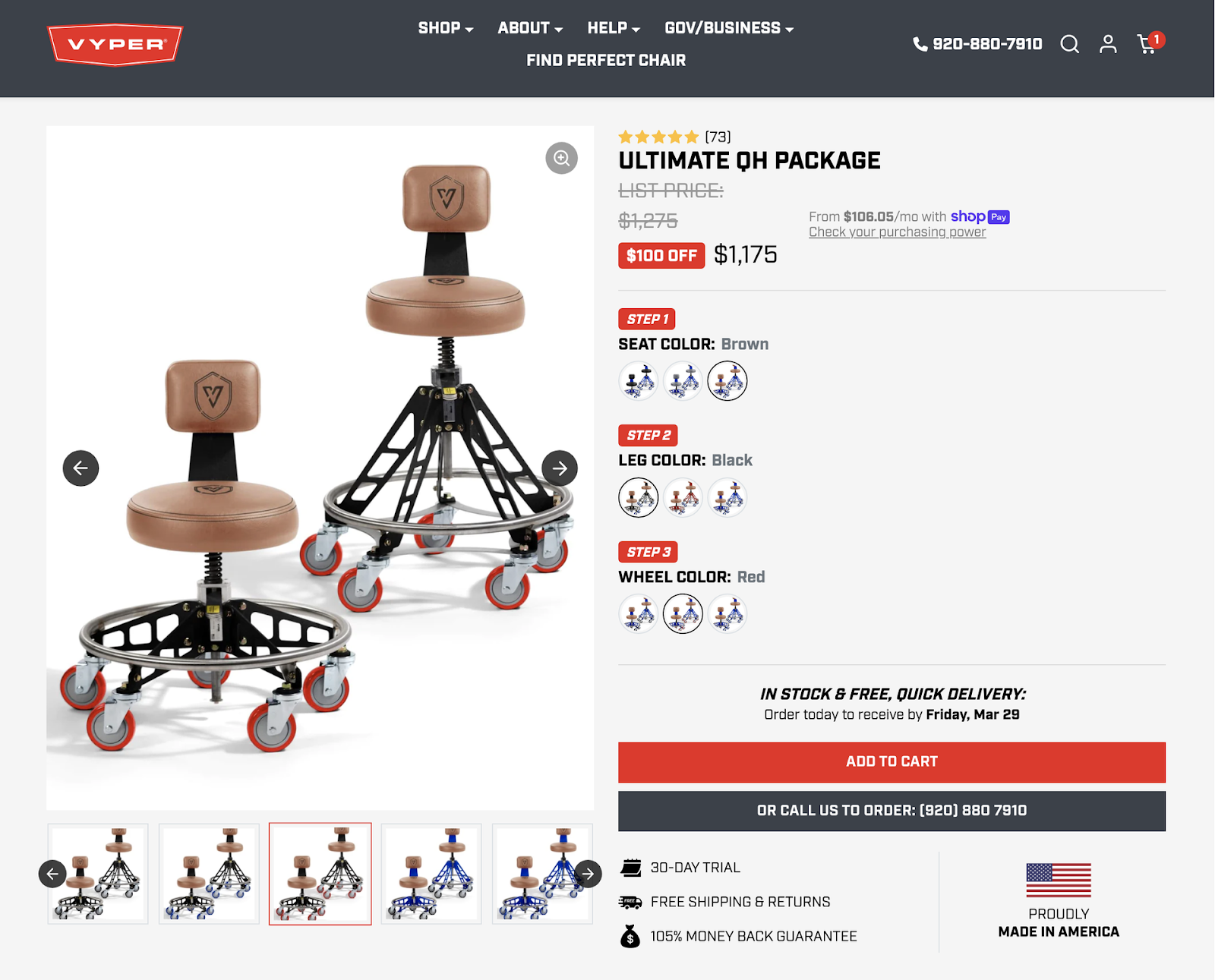
Finally, once the user adds the item to their shopping cart, the site shows dynamic recommendations for related products before they check out.
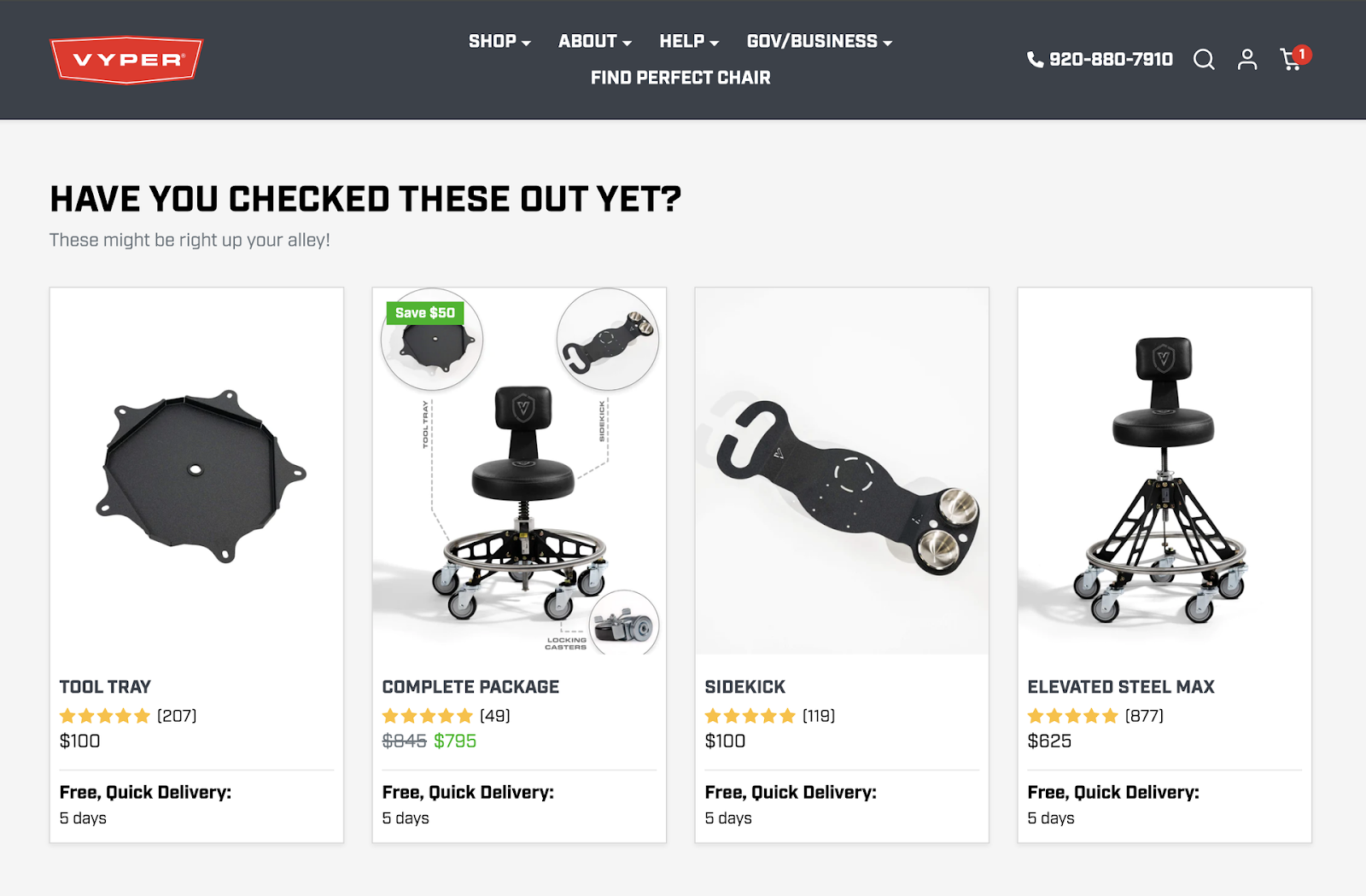
These recommendations are examples of cross-selling. Related items are promoted during the purchase process to increase the customer’s order value.
Why Does Dynamic Content Matter?
Dynamic content can be used in ways that improves user experience (UX), which can increase engagement. As a result, it’s possible to create more value for customers and generate more conversions for your business.
This type of content can influence UX by enhancing:
- Personalization: Dynamic content replaces generic, one-size-fits-all content elements with something unique to each user. It might include their name or their viewed items. This is helpful because 71% of consumers expect personalized experiences, according to a 2021 McKinsey report.
- Relevance: With dynamic content, you can customize interactions based on prospects’ behaviors. For example, a landing page for a paid search ad could dynamically display the exact term the visitor searched before arriving there.
- Engagement: Dynamic content can drive engagement throughout the buyer’s journey. Personalization makes 76% of consumers more likely to consider a purchase and 78% more likely to make repeat purchases, according to McKinsey.
Dynamic Content vs. Static Content
As valuable as dynamic content is, it can’t replace all static content.
That’s okay. Not all marketing content requires personalization. Plus, many marketing messages need consistency across placements to be effective. Static content is a better fit for those.
Marketers typically use a combination of static and dynamic content. They choose which to place where based on the channel and the goal.
Here’s a side-by-side comparison of dynamic content versus static content:
|
Dynamic Content |
Static Content |
|
|
Websites |
Great for suggested resources, chatbots, and site search. Can also work for homepages and landing pages that use audience segmentation. |
Better for blog posts and search engine optimization (SEO) content. (Dynamic content and SEO can be complex, requiring tactics like dynamic rendering.) |
|
Pop-ups |
Ideal for prompting site visitors to take the next step in their buyer’s journey, like signing up for an email list or downloading a resource. |
Works when you want everyone to see the same message, whether they’re visiting for the first time or they’ve been a customer for years. |
|
Emails |
Best for greeting new subscribers and sending personalized content like recently viewed items. |
Good for email newsletters that share a consistent message to all subscribers without customer segmentation. |
|
Search Ads |
Great for including relevant keywords in ads or generating dynamic search ads from landing pages. |
Better when you need to convey a specific message that won’t work with dynamic keywords or copy. |
|
Display Ads |
Ideal for retargeting engaged prospects and prompting them to continue their buyer’s journey. |
Good for brand awareness campaigns targeting prospects who are completely new to your brand. |
|
Paid Social |
Best for adding custom creative elements and callouts to display optimized ads dynamically. |
Great for sharing consistent messaging. |
Dynamic Content and the Buyer’s Journey
How does dynamic content work through the buyer’s journey? Here’s a closer look at dynamic content optimization at each stage (with examples).
Phase 1: Awareness
During the awareness phase, dynamic content should satisfy the user’s intent. Often, it’s to learn more about something.
Dynamic should also guide the user to the next step of their journey. Like signing up for an email list or reviewing a more in-depth product or service comparison.
Examples of dynamic content for the awareness stage include:
- Search ads: Add dynamic elements to search ads to make them more relevant to your target audience. With dynamic keyword insertion, you leave placeholders in your ad copy where your ad group’s keywords can fit. When the advertising network generates the ad, it dynamically inserts the searcher’s exact keyword that triggered the ad.
- Dynamic search ads: This Google Ads tool dynamically generates ads based on your landing page content. Have it pull ad copy directly from the landing page to create ads that relate to the search term and the destination. Just be sure to check that the landing page copy is optimized and relevant to the ad group.
- Paid social: Social media platforms like Facebook and Instagram offer built-in tools to create dynamic experiences for prospects. When you set up info labels or opt in to Meta’s Advantage+ creative, allow the ad network to add dynamic elements to your ads when they’re likely to improve results. These assets highlight things like free shipping or shopper-friendly return policies.
- Website pop-ups: Dynamic pop-ups are great for welcoming new site visitors and encouraging them to interact with your brand. Set them up to appear within seconds of a specific page loading. Or display them right before users click away from the page. At the awareness phase, website pop-ups are especially helpful for inviting prospects to sign up for the brand’s SMS or email list. Once they subscribe, send them personalized content that guides them to the next stage of their buyer’s journey.
Website pop-ups often incentivize signups, offering a discount code or a downloadable resource in exchange for an email address. Below, the Spindrift website pop-up offers 10% off the first order.
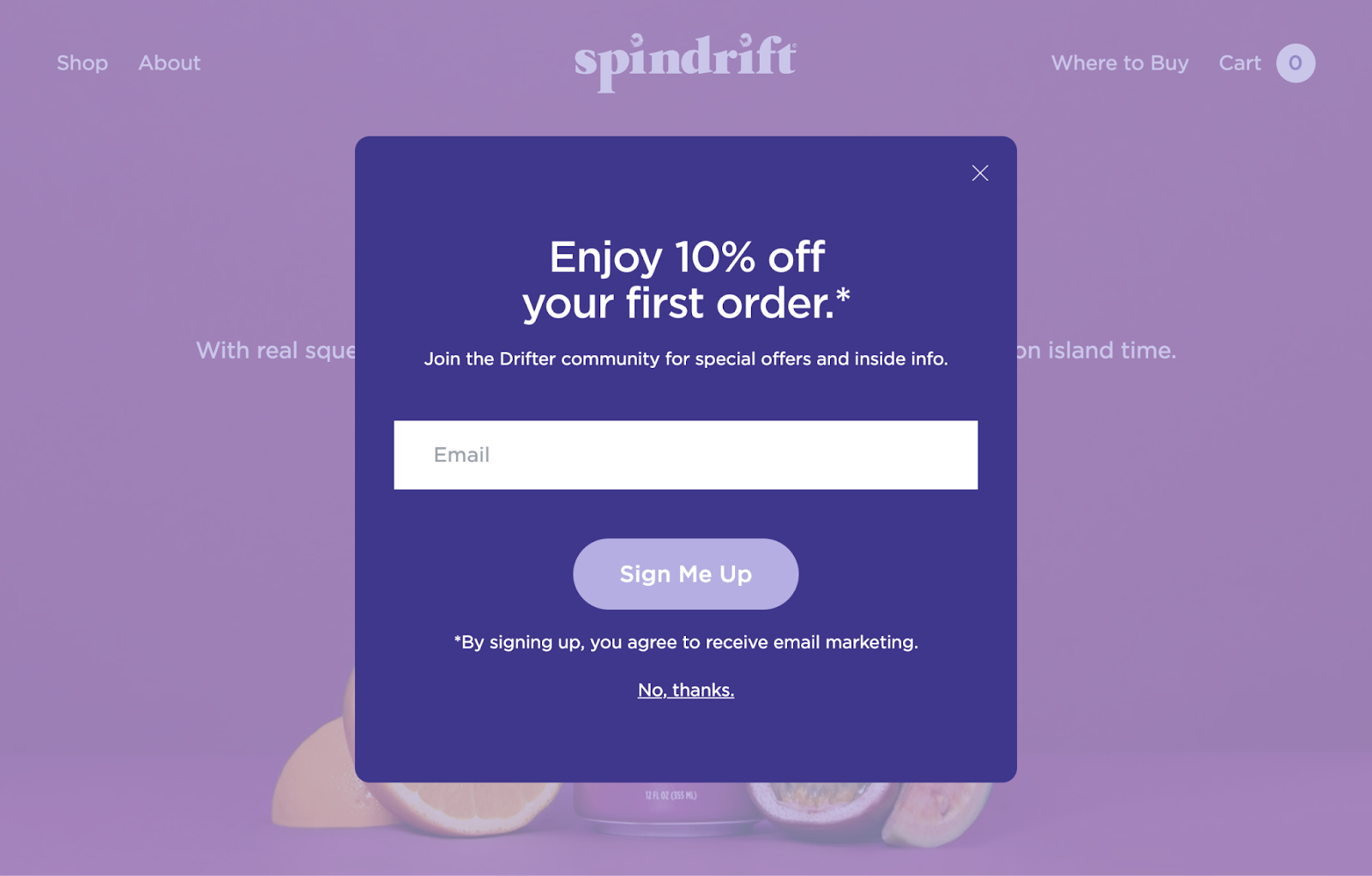
Further reading: 4 types of pop-ups you should have on your site
Phase 2: Consideration
At the consideration phase, dynamic content should provide a custom experience that builds trust. And helps prospects gather information they need to start developing an opinion about your product and brand.
Examples of dynamic content for the consideration stage include:
- Display ads: These image-based ads appear on various news sites, blogs, and other websites. They use real-time behavioral data to build audience segments dynamically and target users based on website visits or interactions with specific products and services. Use them to create an additional touchpoint that encourages prospects to consider your company as a solution.
- Email marketing: What is dynamic email content? It’s content that adjusts based on recipient profiles. During the consideration phase, include personalized subject lines, name-based greetings, and dynamic insertion of products of interest.
- Site search: When you enable dynamic search on your website, you remind prospects about products they previously viewed. This helps potential customers save time as they consider a purchase.
- Lead forms: Dynamically populate lead forms on your website. After prospects download one resource, future forms will automatically populate their contact information, which makes it easier for them to download the next resource.
- Suggested content: Use suggested content to point prospects to additional resources and help them get more value from your brand. With a dynamic content strategy, you can display newly published resources relevant to each user.
- Website chat: Use chatbots to send personalized messages and interactive content to users based on their customer status. Or their previous interactions with your company.
Below, Livestorm’s chatbot greets a new visitor by providing prompts to create an account or get started.
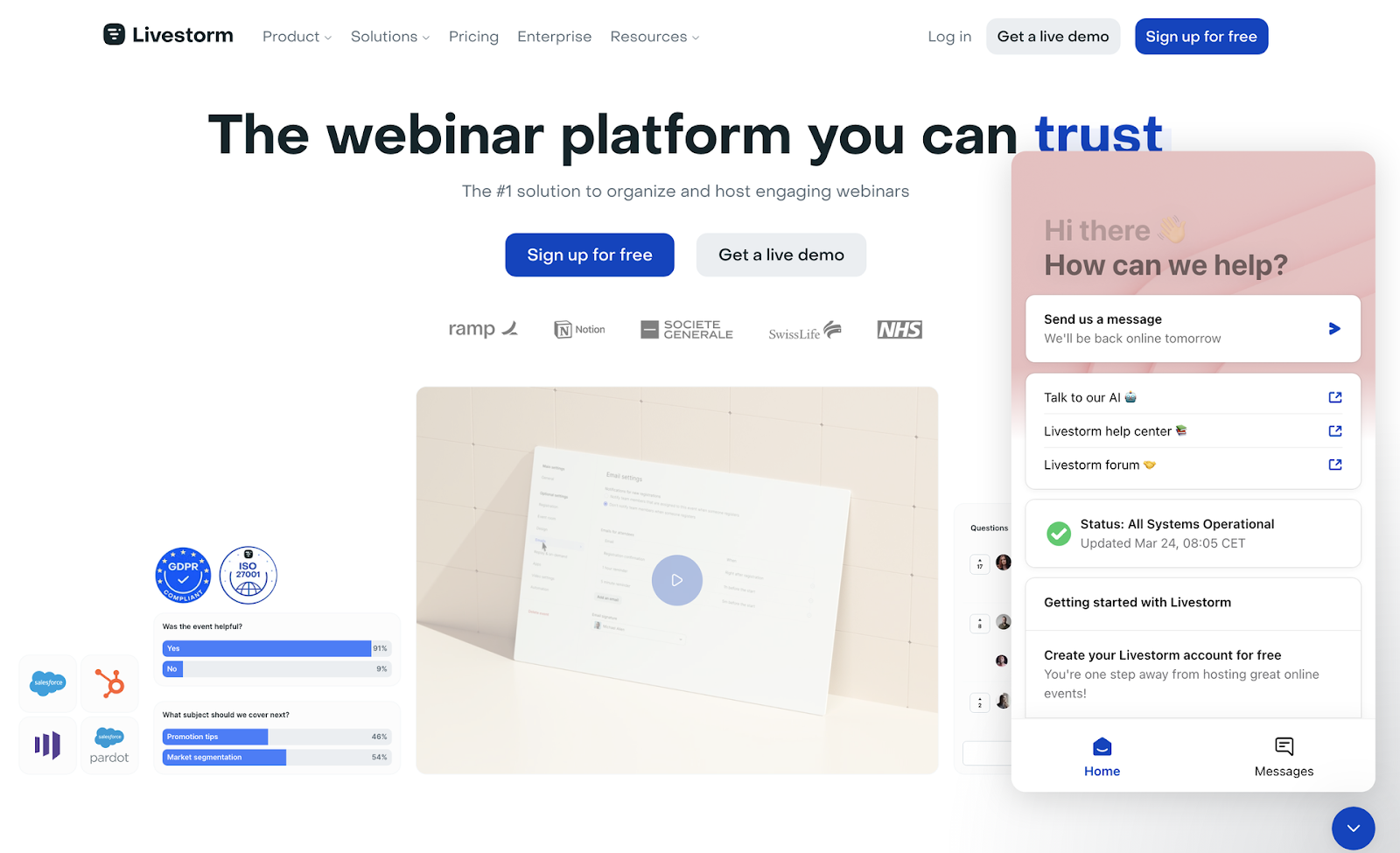
Here, the chatbot greets a customer who has a free plan. This time, it prompts the user to ask a question or get support.
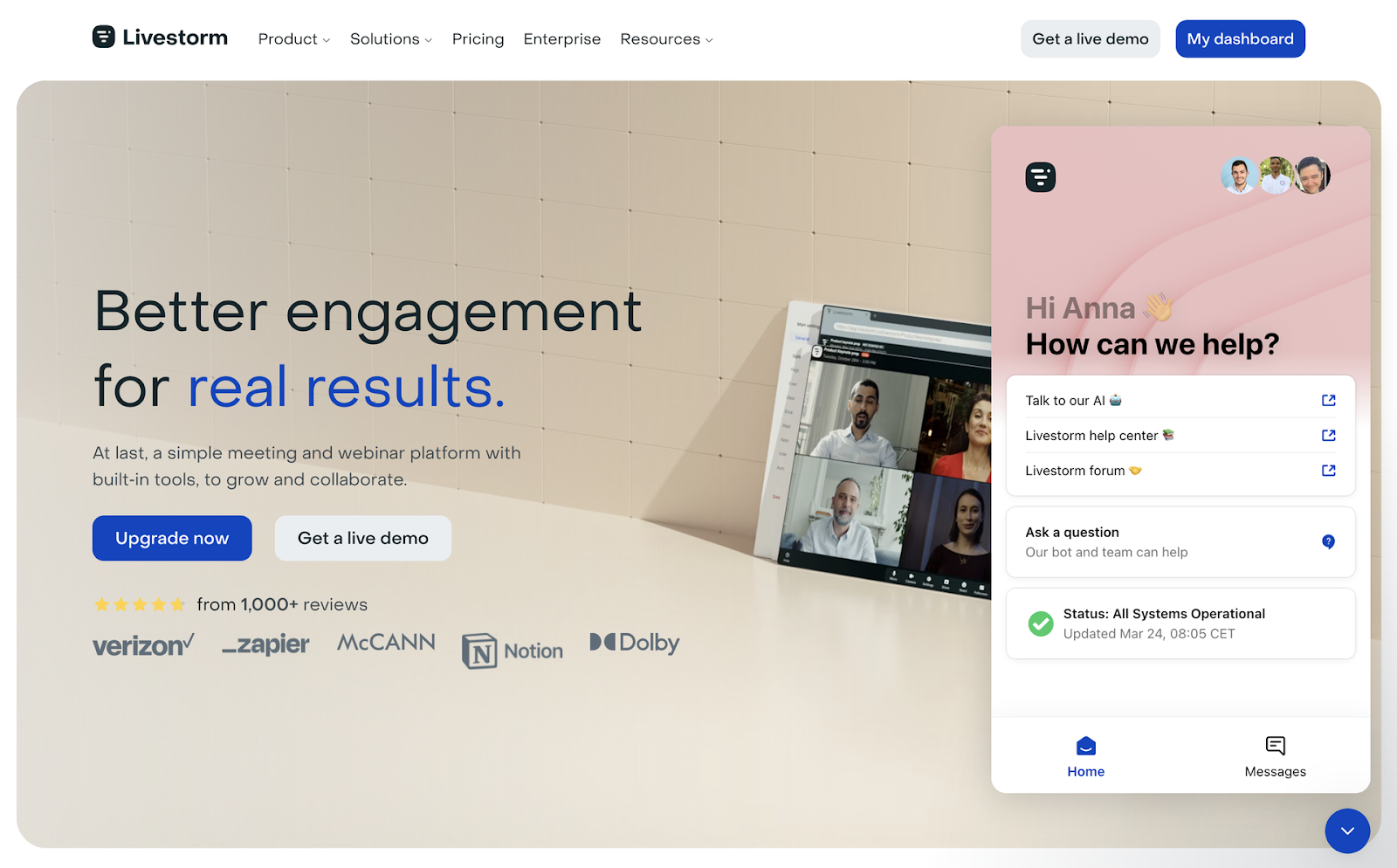
Look at the screenshots again. Notice how Livestorm’s entire homepage displays dynamic content?
It shows completely different information and calls to action (CTAs) depending on whether the visitor is an existing user who navigated directly to the homepage or a prospect who found the site via organic search.
Phase 3: Decision
During the decision phase, dynamic content should incorporate user data and guide prospects toward the end goal by arming them with the information they need to make a decision.
Examples of dynamic content for the decision stage include:
- Promotional content: Use dynamic website or app content, like personalized in-app banners and notifications, to help customers feel confident to take the next step. For example, promote deeper educational resources like comparison sheets or case studies.
- Email campaigns: Use dynamic email content in the decision phase to encourage a purchase. You might include content blocks that reference items a prospect recently considered. Or display custom promo codes.
- Suggested products: To increase customers’ average order value, use dynamic product recommendations. They can be larger or more complex versions of the original item (an upsell) or related items (a cross-sell).
- Product details: Add dynamic details to ecommerce product pages to make the purchase process smoother for customers. Add any relevant information—from product availability and shipping dates to customer reviews and local stores.
Below, the Asics product page automatically displays nearby stores based on the customer’s location.
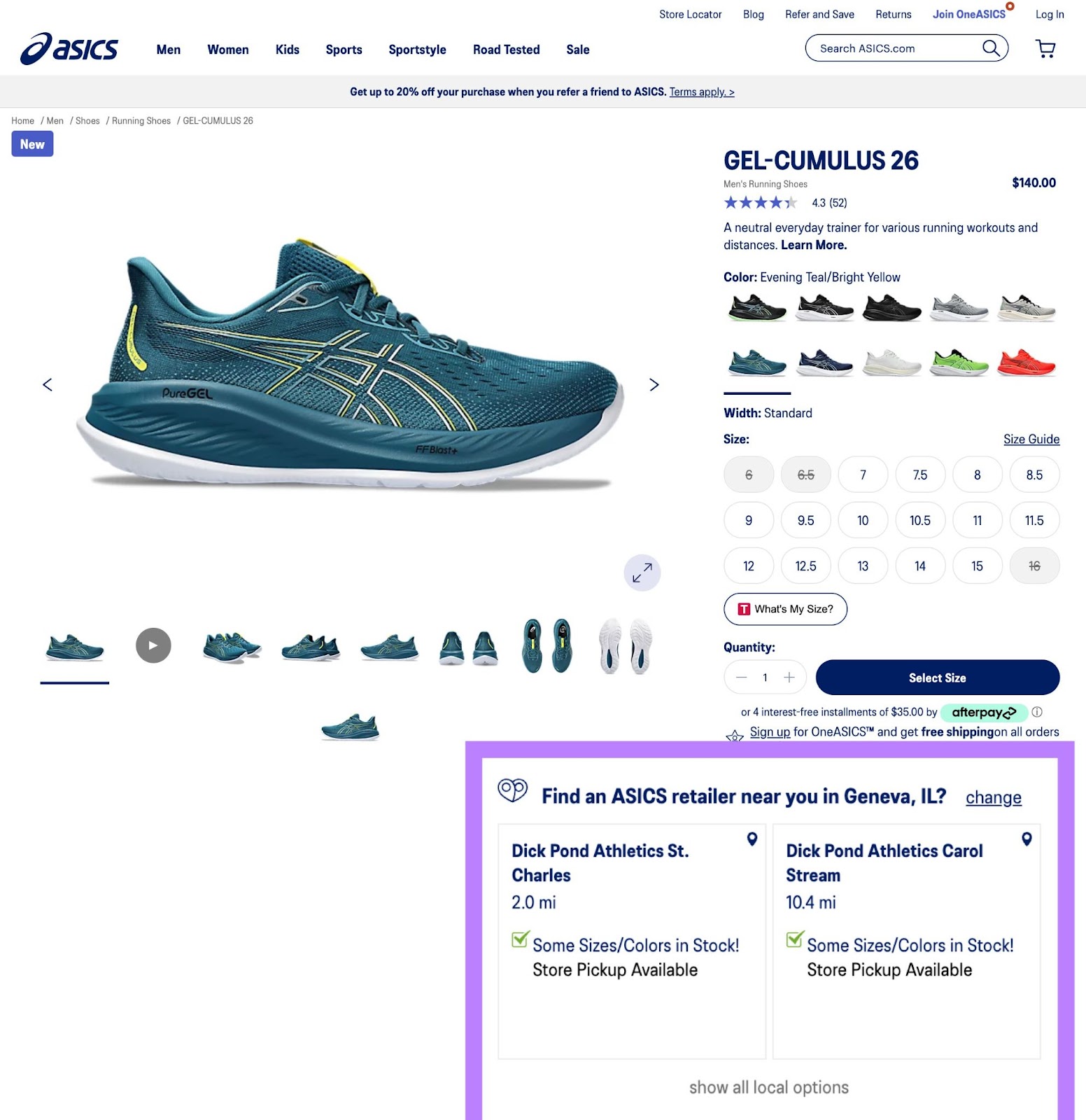
Dynamic Content Best Practices
To make dynamic content work for your business, you need a plan to customize it and a strategy to segment your audience.
Use these best practices to map out your approach.
Choose the Right Dynamic Content Platform
Which platform is best for your needs depends on your desired dynamic content format.
Not sure where to start? These are some good entry-level dynamic content tools:
- Website content: Mutiny or Wix
- Pop-up content: Elementor or OptinMonster
- Email content: Mailchimp or Klaviyo
- Search ads: Google Ads
- Display ads: Google Ads
- Paid social: Meta Ads Manager
The more you invest in content personalization, the more content variations you’ll need to appeal to different users.
To produce variations of your ad creative quickly, use Semrush’s AdCreative.ai app. Find it in the Semrush App Center under the “AI Apps” category.
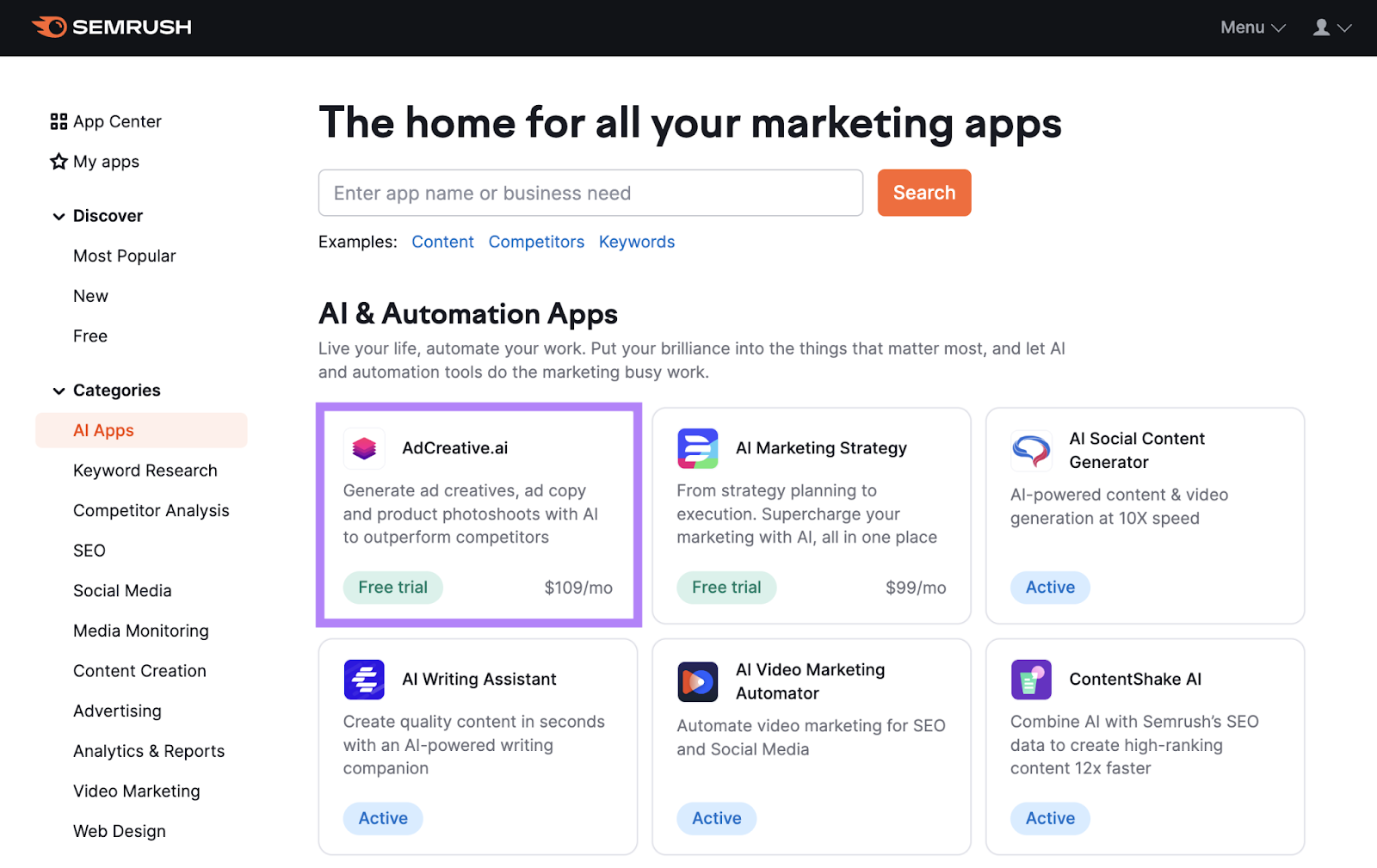
Start creating content by entering your landing page or domain next to “Import from Website.” Then click the “Import Brand” button.
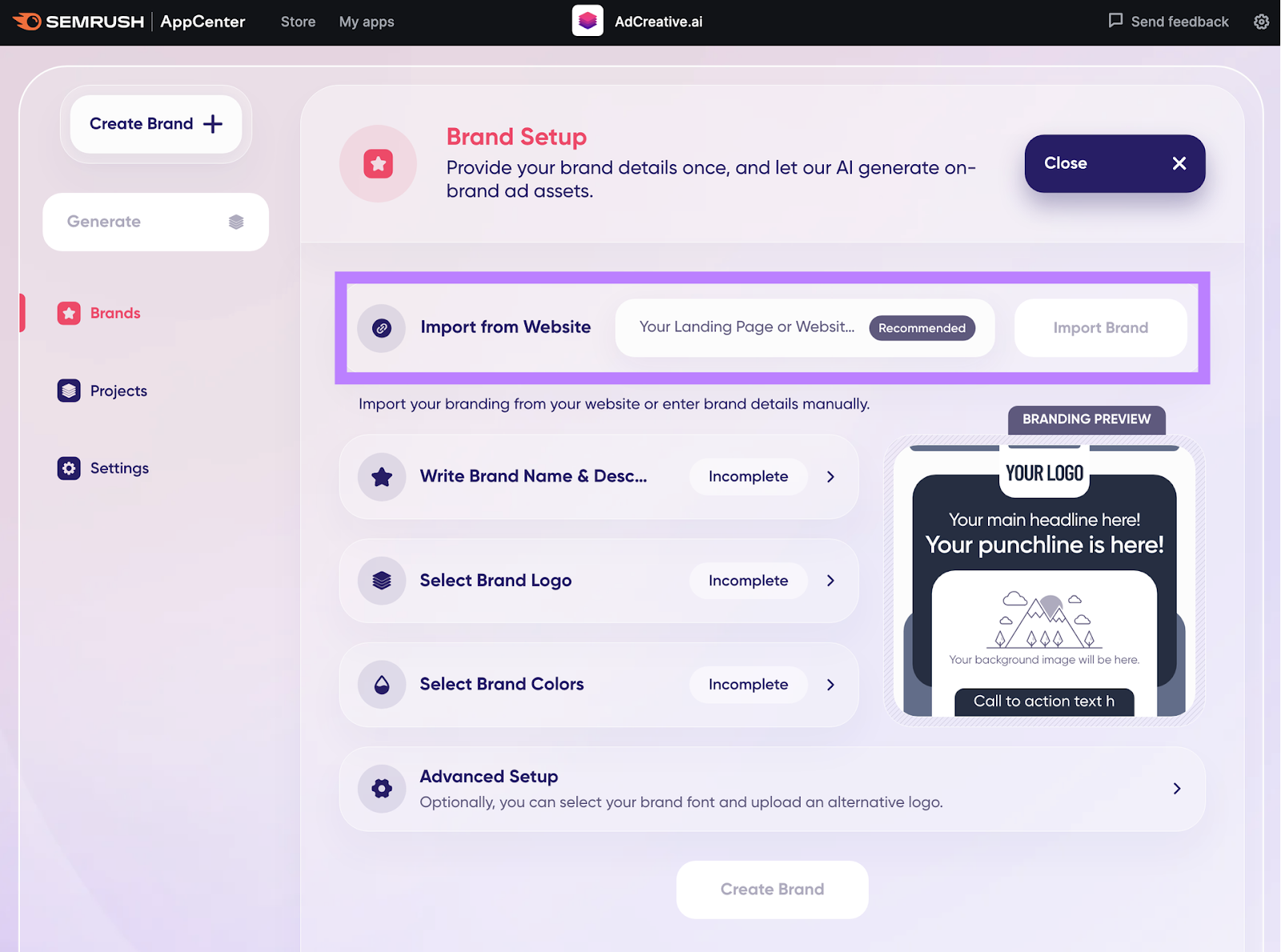
Review the brand name, logo, and colors. Press “Create Brand” to proceed.
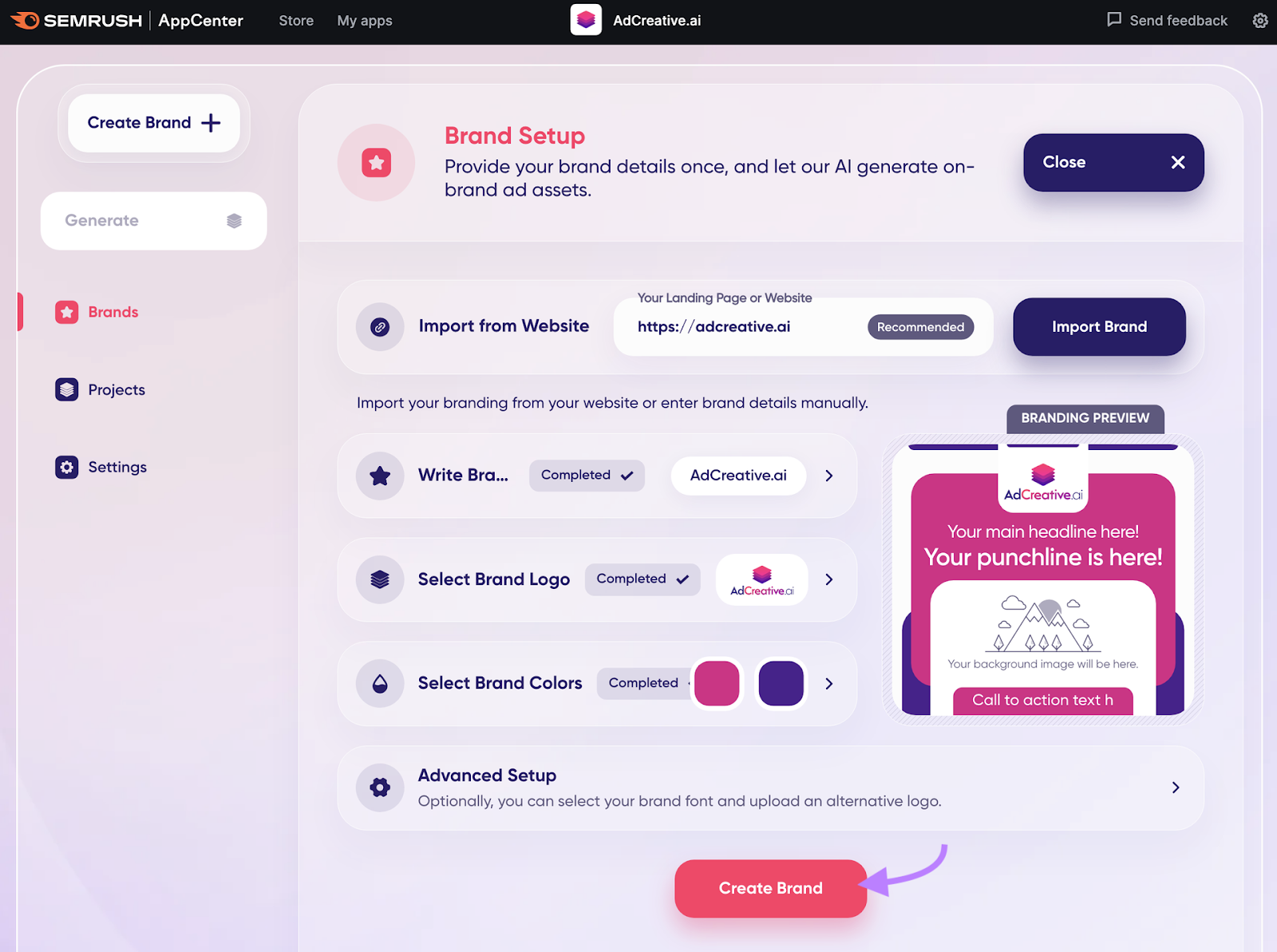
Select “Ad Creatives” as the project type.

Choose a creative format and press “Next Step.”
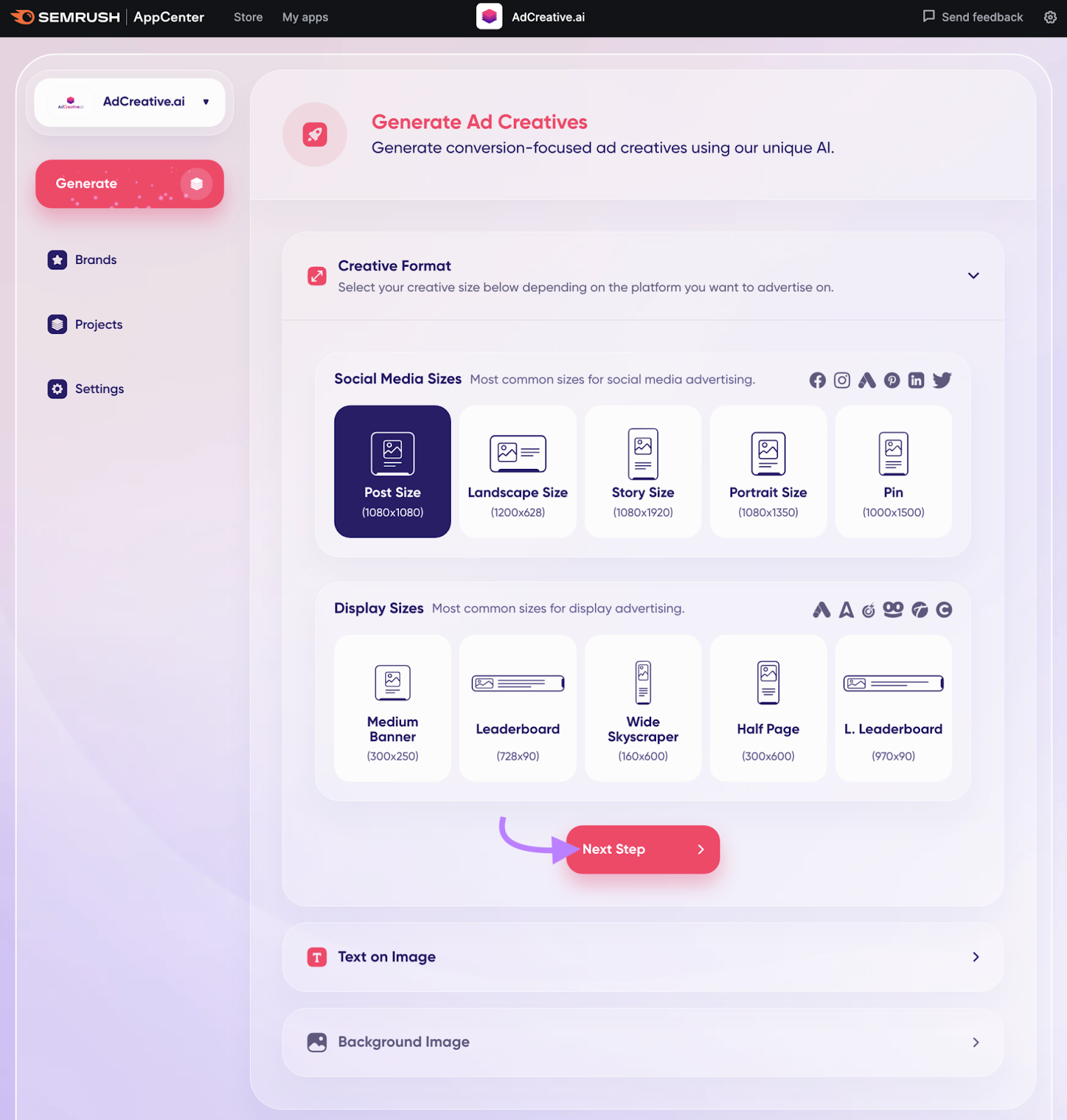
Write your own ad copy. Or click the “Generate Texts” button to generate copy with AI.
Press “Next Step.”
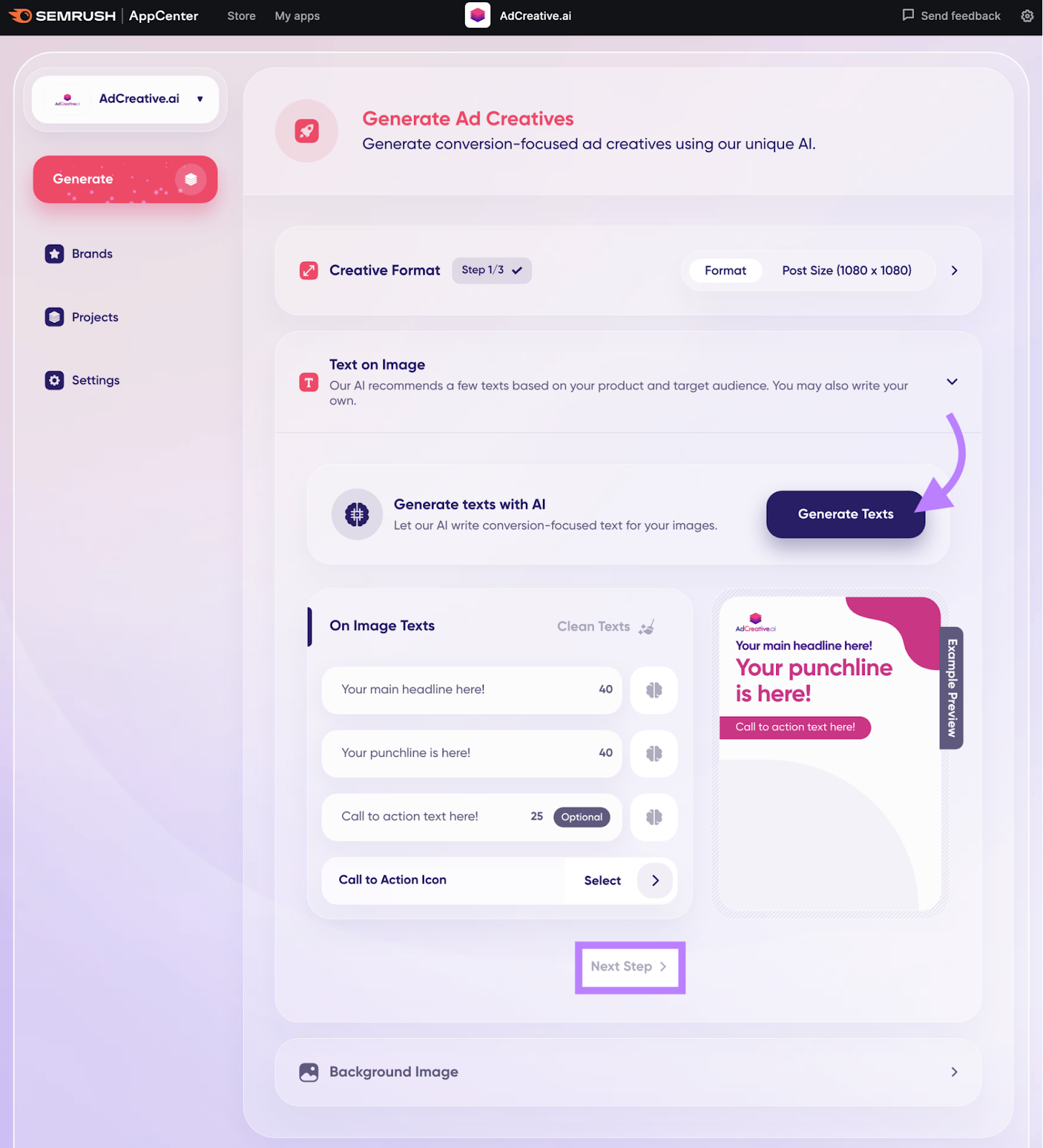
Upload a background image for the ad. The tool will give you a chance to crop it if you need.
Give the project a name if you like. Then, press “Generate.”
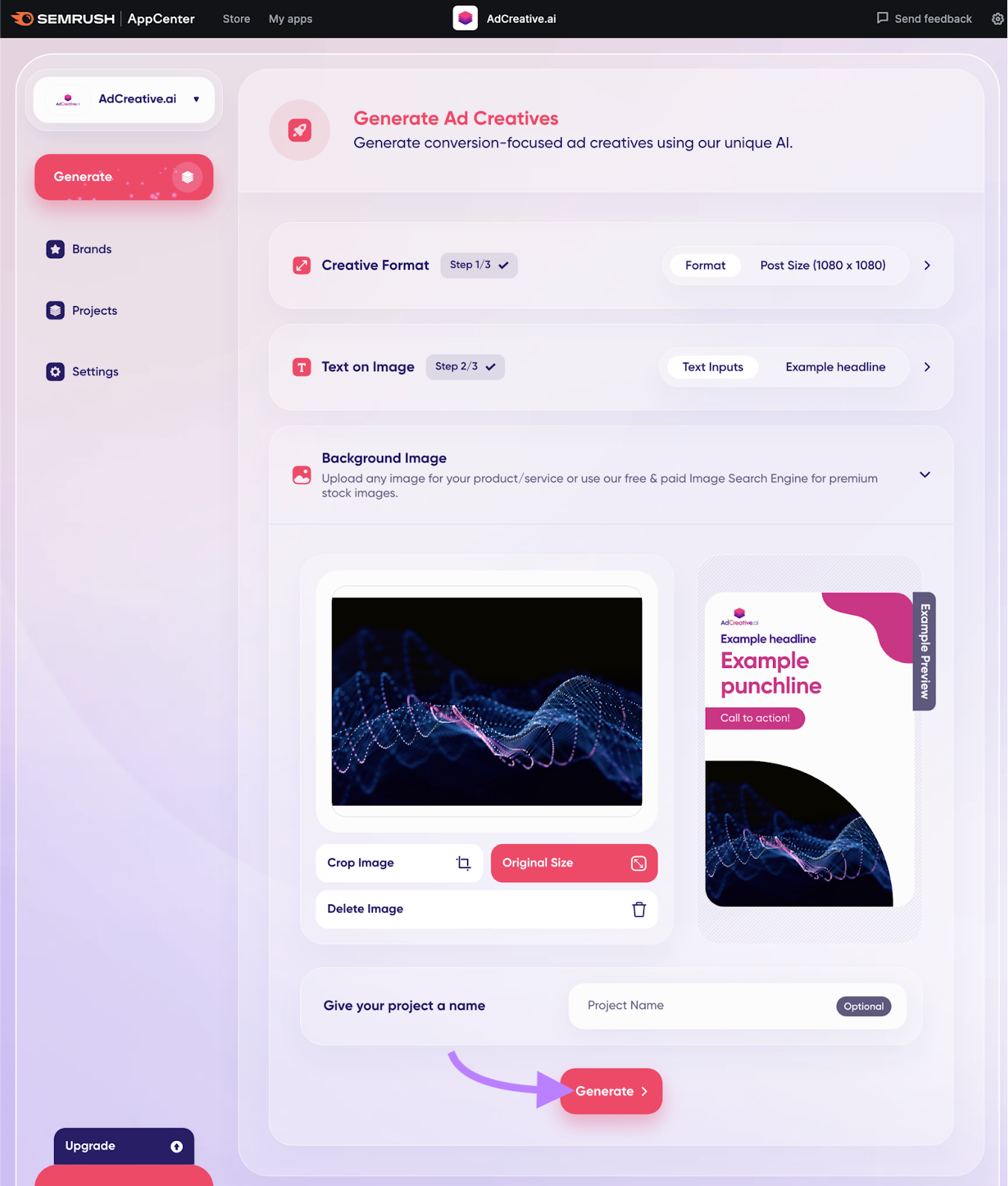
Review the assets, which are ordered according to conversion score.
Select the assets you want to use. You can download an individual asset or use checkboxes to choose multiple. Press “Download.”
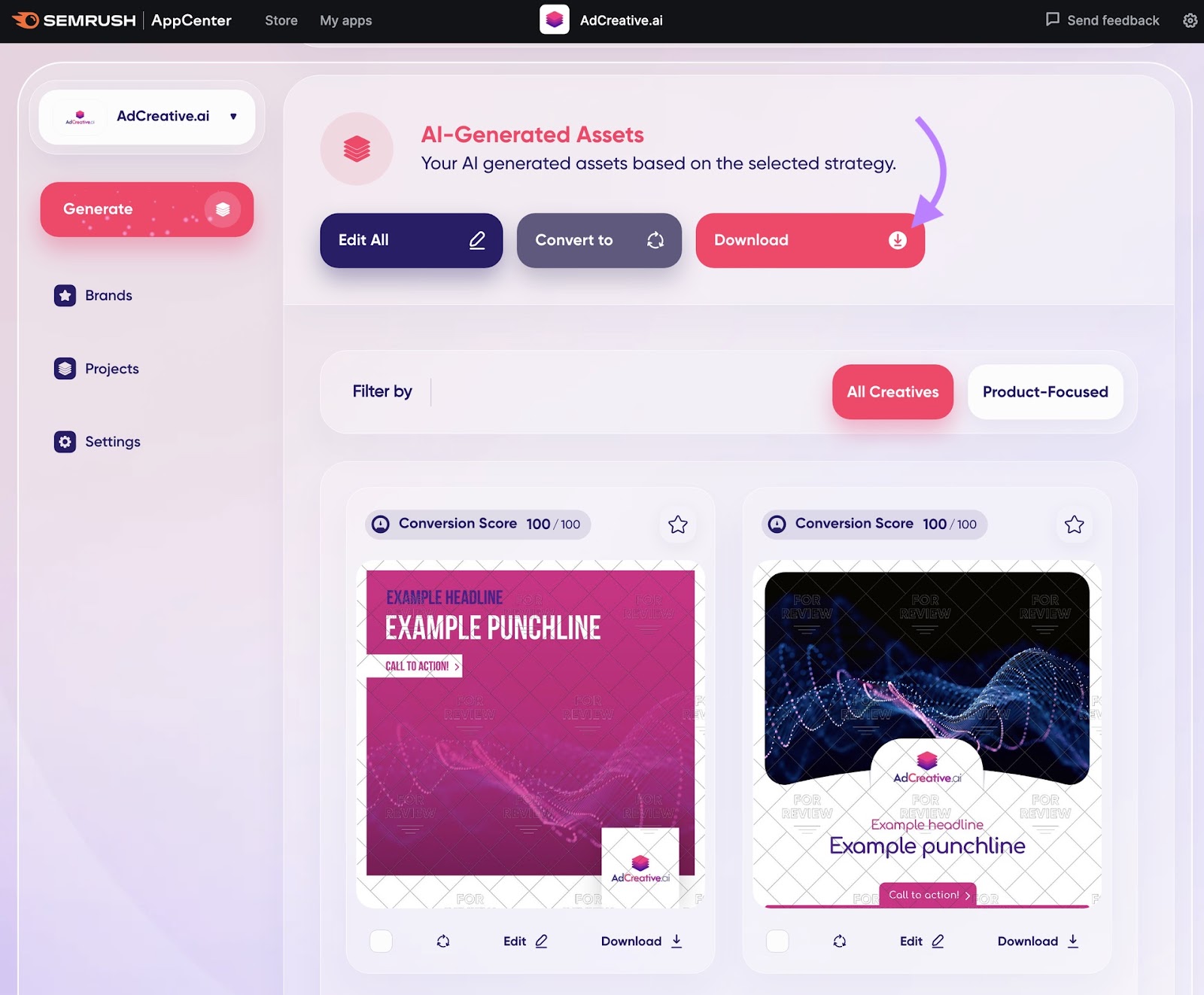
Then, go to your Meta Ads Manager dashboard. Upload the creative assets, enable dynamic settings, and launch the ad campaign.
Collect and Analyze Customer Data
Review the available customer data email, advertising, and website analytics tools. This will help you get an understanding of the types of people you can reach with personalized content.
For example, suppose your website analytics show that a large percentage of users browse multiple products. However, only a small percentage complete their purchase. Most leave your site without converting.
To drive higher conversion rates, you could send personalized abandoned cart emails to customers who have an account on your ecommerce site. Or retarget them using behavioral segments with display ads and paid social.
Segment Your Audience
Many dynamic content tools double as audience management tools. Use yours to create relevant segments.
For example, create segments based on:
- Demographics
- Profession or roles
- Geographic location
- Lifecycle stage
- Whether they qualify as a loyal customer
Here, customers are segmented according to previous behavior. This mountain bike company used profile information to set segment-specific marketing goals.
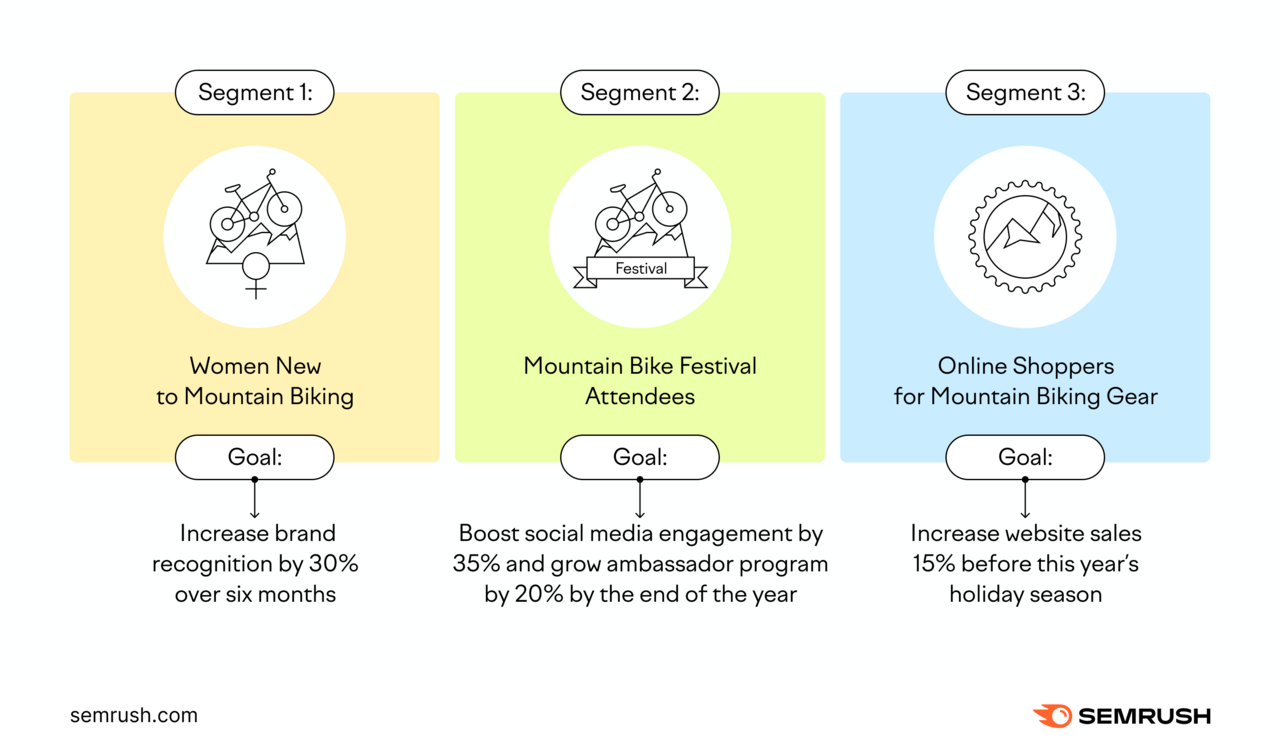
Next, decide how you want to promote your brand to the segment. For example:
- Give an extra discount to customers who meet your definition for customer loyalty
- Advertise cold-weather clothes to people in the northern hemisphere and warm-weather clothes to people in the southern hemisphere
- Promote eco-friendly products to customers who have shown interest in sustainability and a standard alternative to all other customers
Develop Personalized Content Strategies
Map out different messaging or offers for each audience segment. Let their stage of the buyer’s journey guide you.
For example, you may want to point new prospects to helpful resources or incentivize them to sign up for your email list. In contrast, engaged prospects may respond better to limited-time discounts on items they’ve viewed.
Ensure Consistency Across Channels
As you create more variations of content for various segments, be careful not to introduce inconsistencies. They can confuse customers and prevent conversions.
To establish consistency, aim to keep your brand’s core messaging intact on every channel. Use static content when you need to create a consistent experience for everyone.
Then, review your dynamic content and your customer segments. Confirm you’re delivering relevant experiences for each stage of the buyer’s journey, no matter the channel.
Test, Measure, and Optimize
Approach each new attempt at dynamic content like an experiment. Monitor the results closely using your website, email, or advertising analytics tools.
Compare each segment or dynamic content block against your default segment or static content. Ideally, the dynamic version will deliver better results according to the metrics most relevant at that stage of the buyer’s journey.
For example:
- Awareness: More reach and signups
- Consideration: More opens and clicks
- Decision: More purchases
Optimize for better results by continuing to test new iterations on copy, creatives, and CTAs.
The Future of Dynamic Content
Customers already expect personalized experiences from brands. The more content your target audience consumes, the more important dynamic content becomes for guiding customers through the buyer’s journey.
To create more content that resonates with your ideal customer, you need the right tool. Like Semrush.
Start with a free account and test AdCreative.ai at no cost.
Source link : Semrush.com
